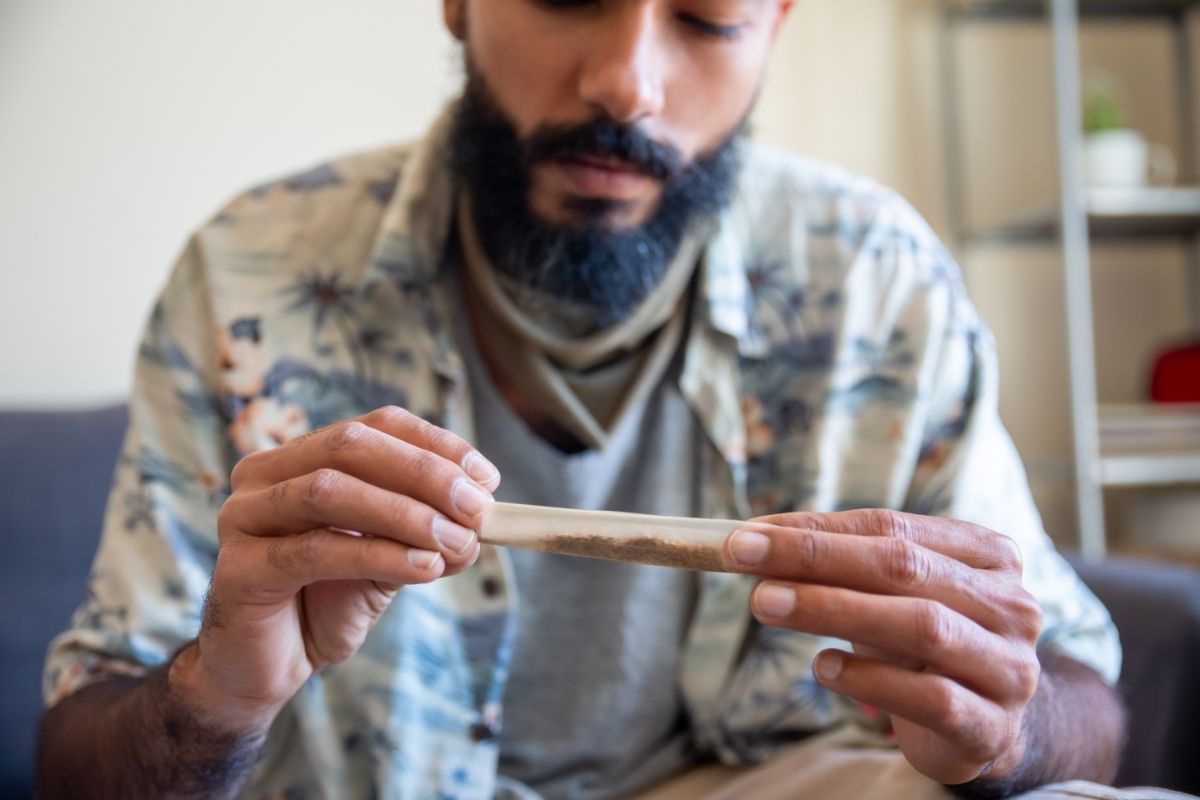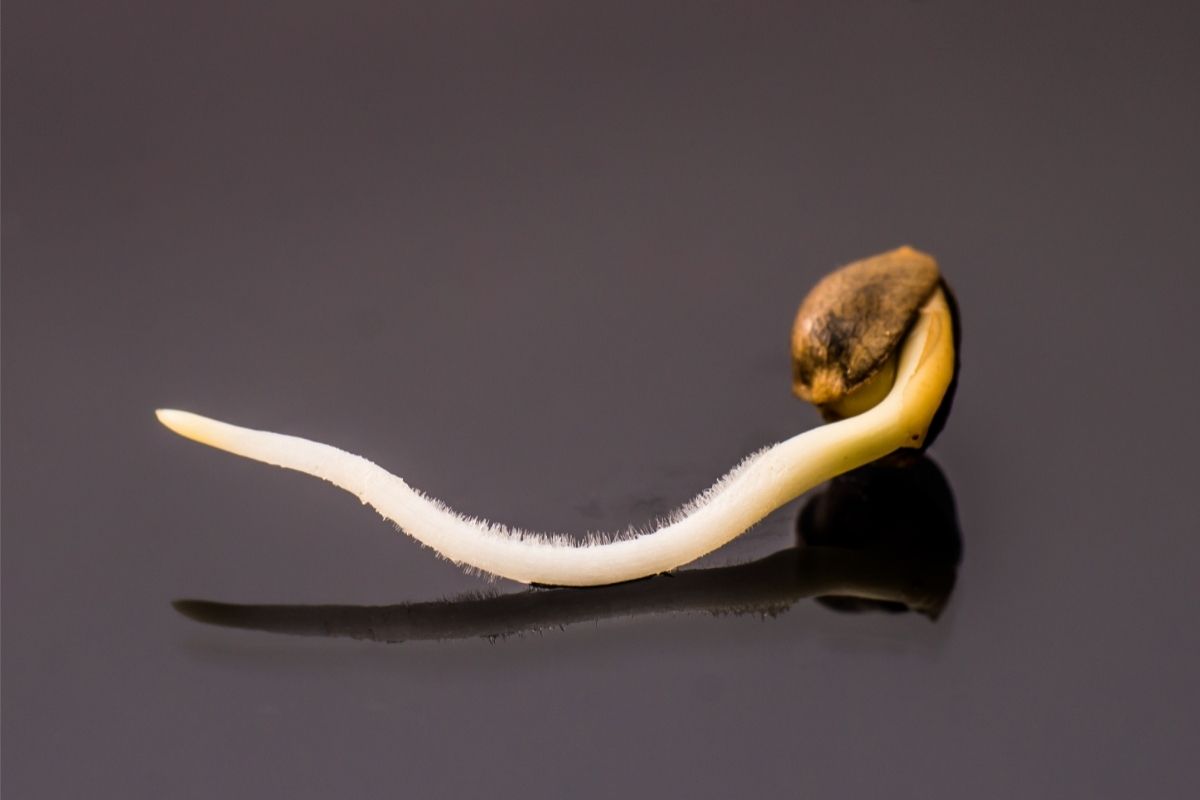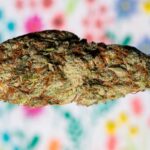Whether you’re new to the world of marijuana, or a seasoned veteran, you’re bound to constantly see the abbreviation ‘THC’ everywhere you go.
You’ll see THC percentages touted on the front of bags or posted everywhere when investigating various strains online. Many buyers simply take these numbers at face value.

A higher number = a bigger high. But is this really true?
If you find yourself wondering about THC and what these percentage numbers really mean, then you’ve come to the right place!
Below is an article that is going to outline everything there is to know about THC percentages and what they mean for the strain you’re about to purchase.
We’re going to break down everything we can about THC from the ground up, and we’ve also made sure to include a short FAQ section that will help you to understand some other common questions about THC and the contents your marijuana strain.
What Is THC?
In this first section, we’re going to break down exactly what is meant by THC. It’s a term that might seem obvious to a more experienced smoker, but for somebody who is new to marijuana, it might be confusing.
THC is an abbreviation for tetrahydrocannabinol. This is one of the main cannabinoids in cannabis plants. The reason why people use the abbreviation THC instead of CBD (cannabidiol) is that CBD is not psychoactive.
In other words, it doesn’t get you high. So if someone wants to buy a product with CBD as its primary cannabinoid, they would have no need to worry about THC content.
However, THC is very important to those looking to smoke weed recreationally. For example, if you want to smoke a Sativa strain, which are known to make users feel happy and energetic, then you should look for a strain with a high amount of THC.
If you want to smoke Indica strains, however, which are known to calm your mind and relax you, then you should look to purchase a strain with a lower level of THC.
What Does THC Percentage Mean?
The next thing we’re going to talk about is THC percentage. When purchasing a marijuana strain online, you’ll often see the THC percentage listed alongside the name of the strain.
This is usually accompanied by a range of numbers like 10% – 20%. What does this mean? Well, it means that the THC content of the plant could fall anywhere between 10% and 20%. In fact, it could even fall outside this range.
For example, a strain may only contain 10% THC, while another strain may contain 15% THC.
Why Are There Different Levels Of THC?
Now, let’s talk about why there are different levels of THC in marijuana. First off, THC comes from two sources: the leaves of the plant, and the flowers.
As we mentioned earlier, the leaves are where most of the cannabinoids are found. However, the flowers contain much less than the leaves do.
In fact, the flowers contain around 0.3-0.5% THC. This is why you’ll often see a range of numbers appear beside the strain name.
So how does this affect the final product? Well, if you were to grow a single plant, and harvest all of its buds together, you’d end up with a mixture of both the flower and leaf material.
And since the flower contains so little THC, it won’t contribute any significant effect to the overall experience. Therefore, growers tend to separate out the flower bud material before harvesting.
This way, they can ensure that their finished product has a higher concentration of THC.
This is why when you go to purchase a marijuana strain online, the THC percentage is almost always listed separately from the rest of the information on the label.
It gives you a good idea of how potent the strain is, without having to actually smoke it.
How Much THC Is Within A Joint Or Bowl?
The first question I’m sure you want answered is: “How much THC am I consuming?” This really depends on many things.
If you’re looking at a bud, you should expect to find anywhere from 10% to 20% THC. If you’re buying an oil, concentrate, shatter, wax, crumble, or whatever else, you should expect to see anywhere from 25% to 35% THC.
However, if you’re purchasing pre-rolled joints, you should expect to receive anywhere between 15% and 30% THC.
So, if you’re trying to figure out how much THC you’re getting by smoking a joint, you need to take into consideration the size of the joint.
You also need to remember that each gram of marijuana contains about.03 ounces (1/8th ounce). So, if you have two grams of weed in a joint, you actually have 1/4th of an ounce (.25 oz) of weed.
When you smoke a joint, you’re inhaling the entire contents of the joint. In other words, you’re taking in one whole half of an ounce of weed.
If you smoke a joint with a lot of buds, you’ll be absorbing a higher percentage of THC. But, if you smoke a smaller joint, you’ll be absorbing less THC.
So, when it comes to determining how much THC you’re consuming, you need to consider both the size of the joint and the number of buds within the joint.
But, you can’t forget about the ratio of THC to CBD. The ratio of THC to CBD varies greatly from strain to strain. For example, some strains contain almost no CBD while others contain up to 40%.
For instance, if you were to smoke a joint containing 5% THC and 95% CBD, you would be consuming 5 milligrams of THC for every 100 mg of CBD. In this case, you’d be consuming five times more CBD than THC.
It’s important to note that this isn’t the same thing as being dosed with five times the amount of CBD.
It’s simply the ratio of CBD to THC. If you were to smoke a bowl of cannabis containing 50mgs of THC and 500mgs of CBD, you would still be consuming 5mgs of THC for every 100mgs of CBD.
However, if we were to compare these numbers to those found in a typical edible, we would find that edibles are typically dosed with around 60mgs of THC for each 300mgs of CBD.
That’s because most edibles contain a very small amount of CBD. As a result, the ratios of CBD to THC found in edibles are much lower than what you might find in a joint.
Now that we’ve covered the basics, let’s talk about how your body processes THC, and how it interacts with your own personal tolerance.

How Does Your Body Process THC?
Your body converts THC into 11-hydroxy-THC, which is known as 11-OH-THC. 11-Hydroxy-THC is then converted into THCA-A, which is then transformed into 11-nor-9-carboxy-THC. This process is called decarboxylation.
What does all this mean? Well, your body needs time to convert THC into its active form. That’s why you may experience a delayed reaction after smoking a joint.
Your body takes longer to break down THC than it does CBD. As a result, you won’t feel any effects until several hours later.
If you’re planning on using cannabis during hours when you will need to be active and alert, make sure to eat something before you start. Otherwise, you could end up feeling groggy or even nauseous.
The reason behind this is simple: THC binds to receptors located in the brain. When you consume THC, it travels through your bloodstream, where it reaches your brain.
Once there, it attaches itself to brain cells, which causes them to release dopamine. Dopamine is responsible for feelings of pleasure.
When you eat food, your stomach breaks it down into amino acids. These amino acids travel through your bloodstream and reach your brain. Once they attach themselves to brain cells, you get that sense of satiety.
However, if you don’t eat anything beforehand, your body doesn’t have enough energy to break down THC. Instead, it just sits in your system, causing you to feel tired.
How Can I Know If I Have Tolerance For THC?
Just like any other substance that alters you, there are levels of tolerance for THC. Some people have intense effects that last only minutes, while others have mild effects that last hours.
If you find that you have extreme or adverse side effects from THC, then you know that you most likely have a small tolerance and that you’ll need to be careful with how much you consume.
Similarly, high THC strains are not the best thing for somebody who is new to marijuana to consume. This became clear when Colorado legalized recreational weed back in 2014.
Before legalization, many dispensaries sold “skunk” strains, which contained extremely high amounts of THC. After legalization, the market shifted towards more balanced strains.
The same goes for edibles. For example, if you’re a first-time user, you should probably stick to low-dose edibles. If you can handle higher doses, try out some medium-high-dose edibles.
Finally, if you have no problem with THC whatsoever, you can go ahead and use super strong edibles.
Final Thoughts
Hopefully, this guide has helped you understand some of the basic differences between CBD and THC. You now know exactly what both cannabinoids do, and how they differ from one another.
In addition, you should also know how to choose the right product for yourself. But, if you’re still confused, check out our comprehensive FAQ section below. We’ll answer all of your questions!
Frequently Asked Questions
What Is The Difference Between THC and Indica?
Indica strains tend to produce more euphoric highs, while Sativa strains tend to produce more cerebral highs. Both types of plants can cause anxiety, paranoia, and other negative side effects.
However, their effects vary depending on the strain. For example, an Indica plant will usually induce sleepiness, whereas a Sativa plant will often give you a more energetic high.
Sativas are generally preferred by people who enjoy social activities. They also tend to provide more mental stimulation. On the other hand, Indicas are better suited for relaxing purposes.
They also tend to be less expensive. You can learn more about the different types of cannabis here.
How Much THC Is In A Strain?
There are two ways to measure the amount of THC in a particular strain. First, you can look at the total percentage of THC in the flower. Second, you can look at how much THC is present per gram of dried bud.
The latter method is considered to be more accurate because it accounts for factors such as moisture content. In general, the higher the THC content, the stronger the effect.
For example, a strain with 10% THC would be twice as strong as one with 5%. Similarly, a strain with 0.1% THC would be 100 times weaker than one with 1%.
How Much THC Should I Use?
It depends on your tolerance level. If you’re new to cannabis, start off slowly. Start with small doses (e.g.,.5 – 2 grams) and work your way up to larger amounts over time.
If you’ve been using cannabis regularly, then you probably already know how much THC you can handle without feeling any adverse effects. Just remember that everyone’s tolerance differs.
- Quotes From The ‘Reefer Madness’ Period That Show How Far We Have Come - May 17, 2022
- 10 Tips On How To NOT Smell Like Weed - May 17, 2022
- Tropical Punch Strain Review: Everything You Need To Know - May 17, 2022








